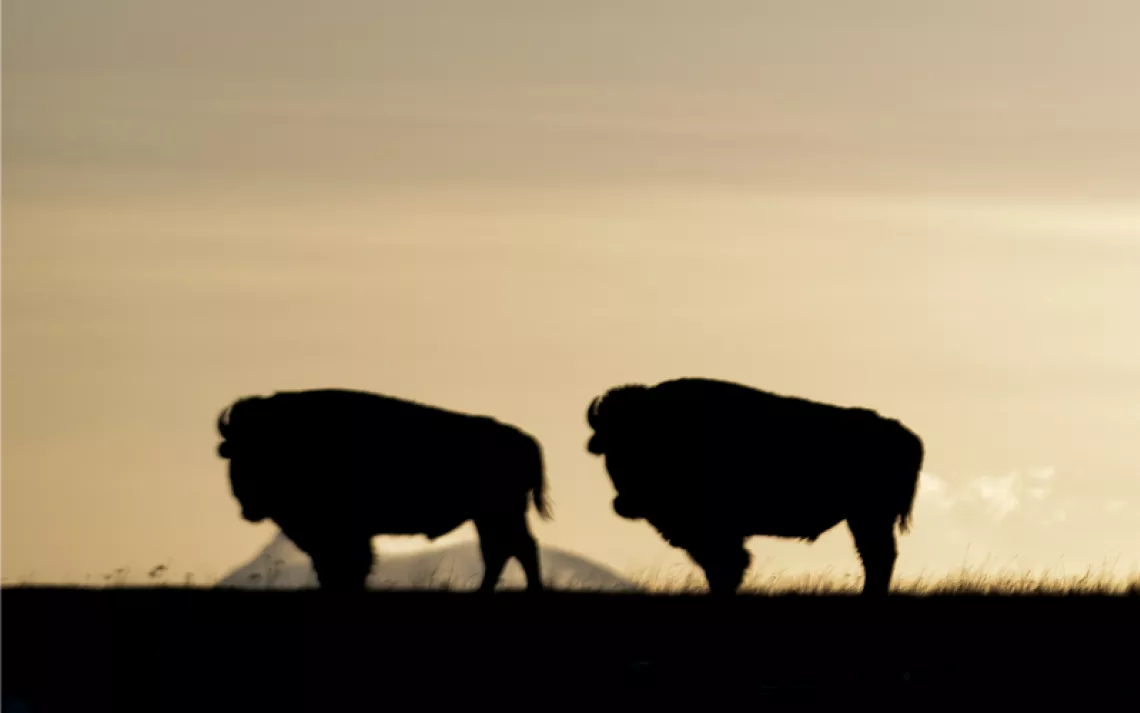Room to Roam

Photo by iStockphoto/Exploder1
The bison is an icon of American wildlife. In December, the U.S. Senate voted to make it our national mammal, and the state of Montana just took a significant step toward treating it as such. In a recent decision by Governor Steve Bullock, the state will now allow Yellowstone National Park’s wild herd to roam outside park boundaries year-round.
Previously, any bison that strayed beyond the park stopped being managed as wildlife and instead became “a species in need of disease control.” In winter months, when forage was scarce, the animals were tolerated at lower elevations, but during the rest of the year, any bison remaining in Montana were removed through state-sponsored hazings or cullings. Bison will still be restricted to two "tolerance zones” immediately outside of the park, but for the first time they will be allowed to stay in the state throughout the year.
At the turn of the 20th century, the Yellowstone bison herd was the last wild herd of bison in the United States, with a population reduced to a mere 25 individuals. The U.S. Army and frontiersmen had hunted the animals to near extinction to eliminate the Plains Indians’ main source of food and livelihood and open the region to ranching and agriculture. Concerned at the 11th hour that the species would become extinct, the army shifted its efforts to protect this last herd within Yellowstone National Park. The herd’s population has grown significantly since then to an estimated 4,900 individuals this past summer—about the carrying capacity of the park, pushing bison to migrate to greener pastures.

Make every day an Earth Day
Get articles like this one sent directly to your inbox.
With this action you affirm you want to receive Sierra Club communications and may vote on policy designated by the Sierra Club Board.
As Sierra reported in 2013, many of the region's ranchers fear bison will spread brucellosis to their cattle. Around 50 percent of the Yellowstone herd have been exposed to the disease, though the practical threat of contagion is unclear.
The decision will not end the controversy surrounding bison management—Governor Bullock wants the park’s bison population to be reduced to 3,500 individuals, and the National Park Service intends to cull between 600 to 900 bison this year. But it will provide greater adaptivity and discretion in how the animals are managed, opening up the possibility of finding a better balance between the needs of bison and people. Mark Skullog of NDRC said on his blog, “We'll now have the opportunity to actually see how bison use the landscape year-round.” This decision in conjunction with the reintroduction of wood bison to Alaska early last year means that bison are finally regaining some ground.
 The Magazine of The Sierra Club
The Magazine of The Sierra Club



